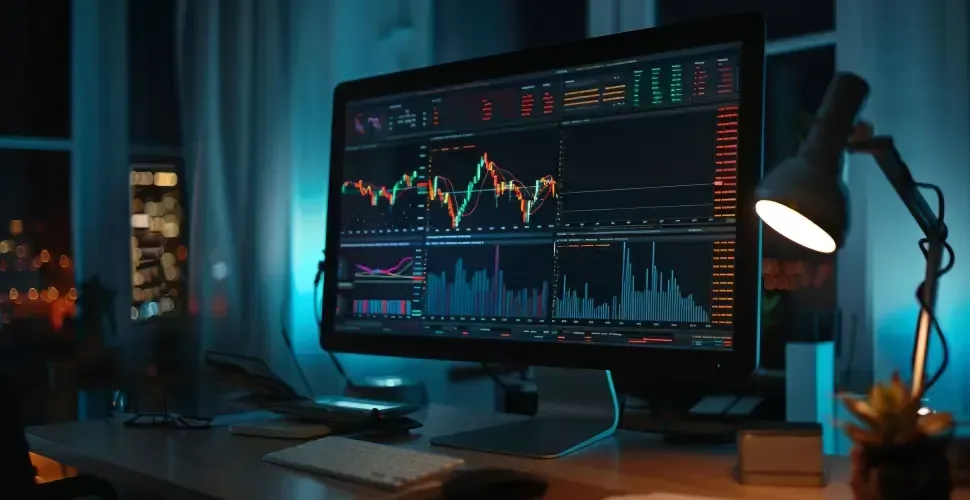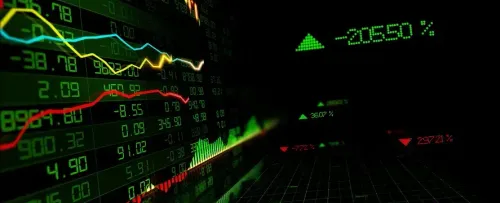
Forex swap fees are charges applied for holding positions overnight in the forex market, which can include interest payments. Swap fees are based on the difference in interest rates between the two currencies in a currency pair, plus a small broker markup in most cases.
In foreign exchange trading, swap fees aren't just a minor line item you might have come across on your trading statement; they are a very real expense that can eat into your trading capital and affect your cash flows if you're not paying close attention. Sometimes, the costs can be as high as up to 15% annually.
Stats released in 2022 showed that Forex swap and spot trades accounted for over 50% of global FX turnover, reflecting just how massive and integral they are to markets.
In 2025, in the current forex market climate, where interest rate fluctuations and foreign exchange risk, along with market volatility, are still prominent, understanding swap fees is non-negotiable for traders who want to be profitable.
In this article, we'll break down swap fees, including how swaps work, how to calculate them, and why they matter in the foreign exchange market for any trader who holds positions open overnight.
What Is Swap in Forex?
An FX swap (also called a currency swap or foreign exchange swap) is the interest amount you either pay or earn when holding a currency pair foreign exchange transaction overnight. They're directly tied to the difference in interest rates between the two currencies in the pair.
If you go long the currency that has the higher interest rate in the currency pair, you'll receive a swap payment. But if you're long the lower-yielding currency in the pair, you'll be paying a swap fee. i.e, it will be an expense.
This swap fee is automatically calculated by your broker at the end of the trading day.
Swaps are expressed in pips per lot and vary depending on the financial instrument you're trading. There are two types of swaps in forex: swap long (for long positions) and swap short (for short positions).
How Foreign Exchange Swaps Actually Work
The Impact of Interest Rate Differentials
A forex pair entails two currencies—each governed by its own central bank policies and respective interest rates. This difference in interest rates is known as the interest rate differential, which essentially determines the swap fee.
In simple terms, it's the "underlying cost" of borrowing one currency to buy another one.
To break it down using an example:
If you buy AUD/JPY, you are basically going long the Australian Dollar and Short the Japanese Yen.
If Australia's interest rate is 4.25% when you open the trade, and Japan's is 1.25%, you're holding a higher-yielding currency and will actually earn a swap fee. However, if you reverse the position, you'll be liable to pay a swap fee.
The Rollover Process Explained
The rollover is the moment a broker extends your position to the next trading day. This isn't a new trade, it's a bookkeeping action that applies the interest rate difference to your position. This occurs every day that a position stays open overnight, with Wednesdays carrying "triple swaps" to factor in holding through the weekend.
This occurs even if you close the trade on Thursday or Friday, and here's why:
Forex settlements take two business days to complete, and the market is closed on weekends. So, on Wednesday night, brokers apply swap fees or credits for Wednesday, plus the upcoming Saturday and Sunday, essentially charging for positions held over a Wednesday due to these weekend interest charges that need to be accounted for.
Even if you close your position on Thursday or Friday, the weekend interest has already been accounted for. It's just how the timing works behind the scenes. Think of it as paying rent for the weekend in advance, whether you stay on or not.
The Role of Central Banks
Central banks play a big role in setting forex swap rates. When they raise or lower interest rates, swap fees usually move in the same direction. So, if a central bank hikes rates, the swap fee tied to that currency will likely rise too—and vice versa.

What Are Foreign Currency Swaps?
A foreign currency swap is a different kind of agreement altogether. It’s not the same as the daily swap fees you see in your trading account. Instead, it’s a deal between two parties to exchange currencies and pay each other back later—usually over months or even years.
Here’s how it works: both sides swap a set amount of money in different currencies at the current exchange rate (the spot rate). Then, at the end of the agreement, they swap the money back, often using a pre-agreed forward rate. This locks in the exchange rate for both parties and removes the risk of future price changes.
Big companies use foreign currency swaps to borrow money in different currencies and reduce their exposure to interest rate and exchange rate fluctuations. These swaps can last up to 10 years and help companies get better loan terms in foreign markets.
The first major foreign currency swap happened in 1981 between the World Bank and IBM. It was a groundbreaking move at the time and helped shape how global businesses manage currency risk today. That said, there's always counterparty risk—the chance that one party won’t hold up their end of the deal.
How to Calculate the Forex Swap Fee?
The Formula Behind it
Swap fees aren't arbitrary: they're based on a fairly standard formula:
Swap = (Lots × Contract Size × Interest Rate Differential × Day Count) / 365
Many brokers simplify this into a lump sum payment per night, quoted in points or your account currency. Either way, knowing how it's calculated gives you more control and understanding.
Real Examples With Major Pairs
EUR/USD: Buying this pair typically means paying a swap, since USD interest rates are often higher.
AUD/JPY: Buying AUD/JPY may yield a credit if Australian rates are significantly higher than Japan's.
Swap rates shift constantly with market trends, so always double-check the latest swap rates before entering a trade.
Impact on Different Trading Styles
Depending on your trading style, swap fees may have little to no impact. Or—the impact might be significant, especially when trading different currencies. Here's a breakdown of how each of the most common trading styles might be impacted.
Scalping & Day Trading
Scalpers and day traders who don't hold positions overnight can usually ignore swap fees entirely. These charges only apply to positions left open past the daily rollover.
Swing Trading
Traders holding positions for days—or even just one night need to factor swap costs into their strategy. Depending on how many swing trades you're doing and how long you have them open for, these fees can definitely add up.
Long-Term Trading
If you're carrying positions for weeks or months, swap fees can be massive—especially if you're on the wrong side of a higher interest rate. In some cases, they might even outweigh trading profits.
The reality is that most retail traders struggle—between 72% and 84% lose money, highlighting how vital it is to understand costs like swap fees.
The Actual Impact of Swap Fees
Swap fees are not just an arbitrary number; they have a real impact, and here's how:
It's About More Than Just Fees
Swap rates also reflect foreign exchange risk and exchange rate risk—especially during high volatility. You may, in fact, pay more because of sudden changes in market conditions or sudden and unexpected moves by a specific central bank.
Carry Trades are Still Popular
These trades are where traders buy high-yielding currencies and sell low-yielding currencies. They're often seen as long-term investments, rely on positive swaps to generate profit, but they're not without risk. A common way to profit from swap rates is through a carry trade, involving high and low interest rate currencies. A sudden swing in the forex market can quickly turn a winning trade into a loss.
Look Out for Tom/Next Swaps
Some brokers quote tom next (tomorrow/next day) swaps—essentially forward contracts that roll your position. These are common in institutional forward transactions, but some retail brokers use them too.
Swap Fees in the Broader Forex Market
Swap fees reflect monetary policy, funding availability, and even liquidity between two currencies on a given day.
They also help keep the system in balance. By charging or paying swaps, brokers encourage responsible risk management and discourage reckless, leveraged overnight bets. Research your broker options thoroughly, and consider Seacrest Markets as your trading partner.
What Traders Should Do in 2025
Swap fees aren't going anywhere. If anything, they're becoming more important as interest rates and exchange rates stay volatile, highlighting the risk involved.
Whether you're trading foreign currency casually or managing an open position, understanding swap mechanics helps protect your bottom line.
Smarter Swaps, Better Trades
In 2025, successful forex trading is about much more than just reading charts, following the news, or having a good strategy; it's about knowing the costs involved and how to manage them efficiently.
If you understand how swap fees work, you immediately put yourself ahead of a portion of forex traders, especially as forex conditions continue to evolve and interest rate differentials widen.
If you want to stay in the game and remain profitable, then understanding swaps is an important part of the forex game. Be aware of them, and if possible, let them work for you—not against you.




